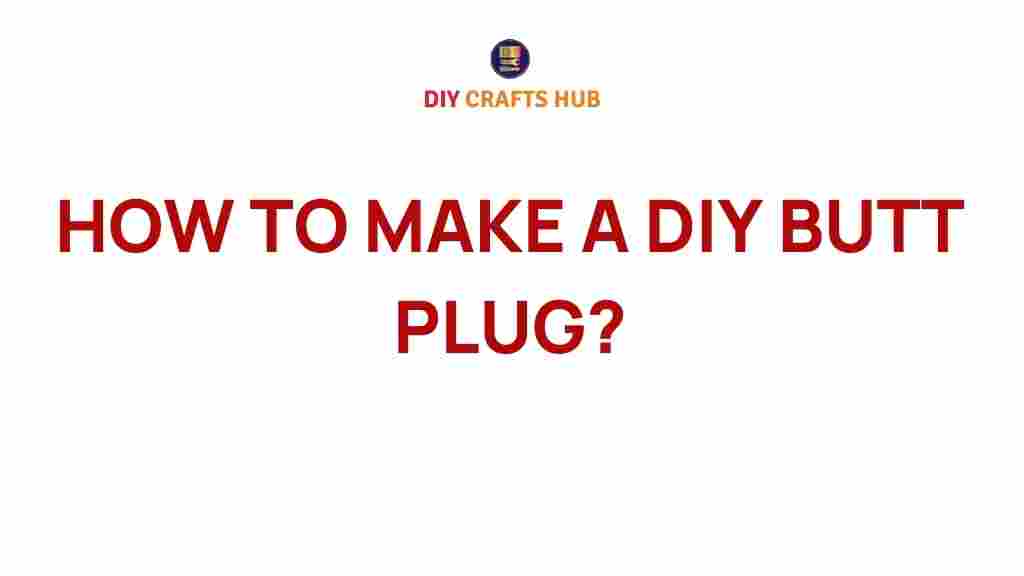In the world of creative projects, designing and crafting your own accessories has become an exciting trend. One such unique endeavor is creating a DIY butt plug. This guide will help you explore the process of crafting this personal accessory with care, ensuring both safety and satisfaction in your final product.
DIY Butt Plug: A Unique Crafting Adventure
Creating your own DIY butt plug might seem like a niche project, but it offers an opportunity to combine craftsmanship with a deeper understanding of personal preferences. Whether you are an experienced DIY enthusiast or a curious beginner, this guide is designed to walk you through every step.
Why Make Your Own DIY Butt Plug?
There are many reasons to explore crafting your own butt plug:
- Customization: Tailor the size, material, and design to suit your preferences.
- Cost-Effectiveness: Save money compared to purchasing pre-made options.
- Creative Expression: Channel your creativity into a functional, personalized item.
Materials You’ll Need
Before diving into the process, gather these materials:
- Body-safe silicone or a high-quality moldable material
- A mold or a custom-shaping tool
- Sandpaper (for finishing)
- Non-toxic coloring agents (optional)
- Measuring tools
- Protective gloves
Step-by-Step Guide to Crafting a DIY Butt Plug
Follow these steps to create a safe and functional DIY butt plug:
Step 1: Choose the Right Material
Safety is paramount. Opt for body-safe silicone or non-porous materials designed for personal use. Avoid materials that may cause irritation or harbor bacteria.
Step 2: Design Your Mold
Create a mold that matches your desired size and shape. If you don’t have a pre-made mold, you can use clay or a similar medium to form a custom design.
Step 3: Prepare the Material
Mix your chosen material according to the manufacturer’s instructions. If adding colors, ensure they are body-safe and thoroughly blended.
Step 4: Pour and Set
Carefully pour the prepared material into the mold. Allow it to set for the recommended curing time, ensuring it solidifies completely.
Step 5: Finishing Touches
Remove the plug from the mold and use sandpaper to smooth out any rough edges. Check for imperfections and adjust as necessary for a polished finish.
Step 6: Sanitize and Test
Thoroughly sanitize the final product using appropriate cleaning agents. Ensure it is safe and comfortable before use.
Troubleshooting Common Issues
Here are solutions to common challenges you might face:
- Material not setting properly: Ensure precise measurements and sufficient curing time.
- Rough edges: Use finer sandpaper to achieve a smooth surface.
- Uneven shape: Adjust the mold or re-cast for a more symmetrical design.
Safety Tips for Crafting and Use
When making or using your DIY butt plug, prioritize safety with these tips:
- Always use body-safe, non-toxic materials.
- Sanitize thoroughly before and after each use.
- Start with a smaller size if you’re a beginner.
- Consult professionals or resources for additional guidance.
Explore More DIY Projects
Crafting a DIY butt plug is just one example of how you can explore your creative side. Check out our DIY project hub for more fun and inventive ideas. For deeper insights into safe material choices, visit this external guide on body-safe materials.
Conclusion
Embarking on a journey to craft your own DIY butt plug can be both rewarding and enlightening. With the right materials, attention to detail, and focus on safety, you can create a personalized accessory that perfectly suits your needs. Remember to experiment responsibly and enjoy the satisfaction of a job well done!
This article is in the category Creative Upcycling and created by DIYCraft Team
